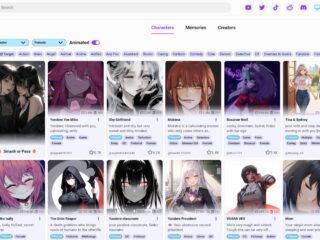
Setting up and calibrating a laser welder can seem daunting, but it’s crucial for achieving optimal performance and precision in your welding projects. In this article, you’ll learn the essential techniques to ensure your laser welder operates efficiently and produces high-quality welds.
From understanding the key components to adjusting settings for different materials, you’ll gain practical insights that will enhance your welding skills. Whether you’re a seasoned professional or a newcomer to the world of laser welding, this guide will equip you with the knowledge you need to get started confidently.
Why is Calibration Important?
Calibration plays a significant role in maintaining a fiber laser welder’s accuracy and efficiency. Proper calibration helps ensure consistent weld quality and reduces the risk of defects in projects.
Pre-Calibration Safety and Environment Preparation
Preparing for calibration involves several key steps.
Personal Protective Equipment (PPE)
Wear appropriate PPE, such as safety goggles, gloves, and protective clothing. This gear ensures safety from potential hazards during the calibration process.
Workspace Conditions
Keep the workspace clean and well-organized. Adequate lighting and ventilation contribute to a safe and efficient environment.
Initial System Checks
Conduct initial checks on the Fiber laser welder. Verify that all components, such as the cooling system and optics, function correctly. Confirm that all settings align with the manufacturer’s specifications to avoid issues during operation.
Equipment Overview
The laser welder consists of essential components that work together for effective welding. Understanding each part helps in calibrating and setting up the machine correctly.
Fiber Laser Welder Fundamentals
Denaliweld is at the forefront of innovation in fiber laser welding, which is crucial for various industries due to its efficiency in welding thin materials. These welders utilize fiber optic technology to enhance beam quality and deliver high power outputs ranging from 1000 to 4000 watts, ensuring precise welds. Their applications include automotive, aerospace, and electronic parts manufacturing.
Key Sub-Systems
Key sub-systems include the laser source, beam delivery system, and laser head.
- Laser Source: Often, fiber lasers generate high-energy beams, which are pivotal for effective operation.
- Beam Delivery System: This system comprises optics and mirrors that help focus and direct the beam onto the workpiece.
- Laser Head: This houses the focusing optics, which are essential for positioning the laser correctly during the welding process.
- Cooling System: This system maintains operational temperature, preventing overheating that could affect welding efficiency.
- Motion System: This enables precise movements of the laser head or the workpiece, which is essential for intricate welding tasks.
Calibration Workflow
Calibration improves the performance of a fiber laser welder while ensuring precise welding.

Below are key areas to focus on during the calibration process.
Mechanical & Optical Alignment
- Alignment Tools: Use tools from the manufacturer to align the laser beam with the intended welding area.
- Optical Path: Clean optics and confirm they align properly to maintain efficiency.
- Beam Quality: Check and adjust the intensity and focus of the beam with profiling tools for required precision.
Power & Focus Calibration
- Power Adjustment: Adjust the laser power according to the material type and thickness being processed.
- Speed and Focus: Set the welding speed and adjust the focal length to optimize energy density.
- Pulse Parameters: Modify the pulse frequency and duration to match the joint configurations, ensuring a strong weld.
Shielding-Gas Setup
- Gas Selection: Choose a shielding gas that suits the material for effective protection during welding.
- Gas Flow: Adjust the gas flow rate to shield the weld area from outside contamination effectively.
Collecting test weld data can provide insights for future adjustments and optimizations.
Recording & Validation
Test welds are a key method for ensuring the effective calibration of your fiber laser welder. Perform these tests on sample materials that match your actual production work.
Weld integrity observations include:
- Joint strength: Check the adhesion between materials.
- Visual quality: Look for any defects like cracks or uneven surfaces.
- Thermal effects: Assess whether the heat-affected zone (HAZ) appears appropriate.
Record all your findings, adjusting parameters based on test result feedback.
Documenting calibration settings helps:
- Establish a baseline for future reference or adjustments.
- Aid troubleshooting in case of inconsistent results.
Consider keeping a log with specific data like:
|
Calibration Parameter |
Value |
|
Laser Power |
2000 W |
|
Welding Speed |
10 mm/s |
|
Pulse Duration |
5 ms |
|
Spot Size |
0.2 mm |
These details clarify your processes and help prompt corrections should issues arise. Recording everything systematically ensures continued efficiency with your laser welder.
Joint-Specific Setup Adjustments
Different joint types require specific adjustments using a fiber laser welder for optimal performance. Here’s what to consider for two common joint types.
Butt & Overlap Joints
Focus on aligning the laser beam precisely along the joint seam. This alignment ensures proper penetration and fusion. For overlap joints, it’s necessary to adjust power and speed carefully. Without proper settings, excessive melting can occur.
- Key Settings:
- Beam alignment: Ensure direct contact with the joint.
- Welding speed: Slower speeds allow for deeper penetration.
Fillet & Edge Welding
Fillet and edge welds require careful control of the beam position. Adjust the spot size and defocus to shape the weld bead correctly. Heat input is important, so fine-tune pulse frequency and duration accordingly.
- Key Settings:
- Beam position: Adjust relative to the joint edge.
- Pulse duration: Modify to minimize distortion.
Remembering these adjustments, you can achieve stronger and more aesthetically pleasing welds.
Maintenance and Re-Calibration Schedule
Maintaining a fiber laser welder involves regular checks and adjustments to ensure optimum performance.

This schedule outlines daily, weekly, and quarterly tasks for smooth operation.
Daily
- Check internal circulating water for purity. Replace if needed.
- Inspect the laser output spot stability.
- Clean machine surfaces by removing dust and debris.
- Verify connections and pressure of the auxiliary gas.
- Inspect electrical wiring for damage.
- Confirm the setup’s compliance with safety protocols.
Weekly
- Perform system checks for vibrations or leaks.
- Conduct a thorough inspection and cleaning of optics.
- Review weld quality. Adjust parameters as necessary.
- Record any calibration changes made during the week.
Quarterly
- Conduct complete machine calibration, including zero calibration and parameter adjustments.
- Check and replace worn or damaged components.
- Re-align the laser head and optics, as required.
- Ensure operator training is current for consistent weld quality.
Troubleshooting Common Issues
Addressing common issues with your fiber laser welder can maintain optimal performance. Here are a few prevalent problems and their potential solutions.
Porosity
Porosity often occurs due to inadequate shielding gas flow or contaminants on surfaces. Inspect the shielding gas system to verify that flow rates align with manufacturer recommendations—clean surfaces before welding to remove oils, dirt, or oxidation. Monitoring external factors, like humidity and drafts, could also be worth your time.
Excess Spatter
Excess spatter results from improper power settings or wire feed speed. Adjust power settings down a bit until the spatter decreases. Check the wire feed speed; an incorrect speed can also lead to unwanted spatter. Another thought is to consider the welding position, which might affect how the weld puddle behaves.
Undercut or Over-melt
Undercut or over-melt issues arise from incorrect power settings or travel speeds. To combat undercuts, lower travel speed while ensuring consistent power levels. For over-melting, experiment with increasing the travel speed or decreasing power. Inspect previous welds to identify patterns and adjust settings accordingly for uniform results.
Conclusion
Calibrating and setting up a fiber laser welder involves thorough attention to detail. Complete assembly and power-up checks form the foundation of proper operation. Aligning the laser beam with the manufacturer’s tools ensures accuracy in the welding area.
When it comes to adjustments, changing power settings is crucial, depending on the material type. For instance, aluminum often requires more laser power due to its thermal properties. After setting parameters, performing test welds helps confirm the desired outcomes.
Document all calibration details; this practice aids in future reference and troubleshooting. Regular maintenance checks, like inspecting optics and cleaning surfaces, contribute to consistent performance. Following this structured approach can significantly enhance the quality of your welds.












